HYANNIS PORT — We boarded the ship in the dark, 50 of us, schlepping backpacks and duffle bags and coolers of food. It was 5:30 in the morning, but most of us had been up for a few hours already just to get here in time. We wore seasickness bands on our wrists and scopolamine patches behind our ears. Collectively, our bodies were probably loaded with enough Dramamine to knock out a horse.
Birding is almost exclusively a land-based activity, but many seabirds are easier to see offshore. I’ve written before about the joy of seeing tubenoses — the oceangoing birds that visit Cape Cod every summer — from a whale-watch boat. But going 5 or 10 miles offshore is not enough to see most seabirds. That requires a proper “pelagic” trip — one dedicated to searching for rare seabirds and other marine life.
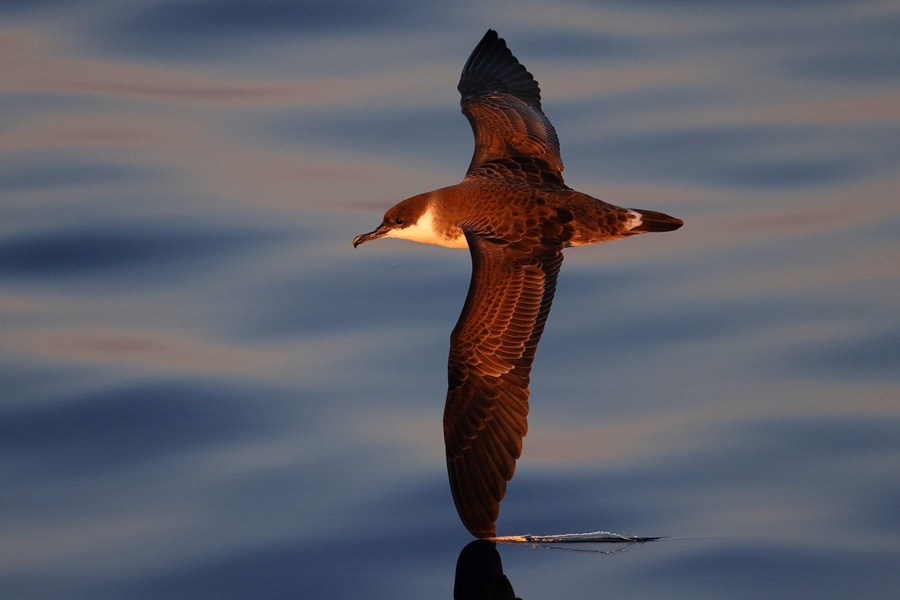
This one was organized by the Brookline Bird Club, which has been arranging what they call “extreme pelagics” since 2005; these trips go way out beyond the Continental Shelf, and since 2012 the club has run them as overnights. The ship we had boarded in Hyannis Port, the Helen H, would be our home for the next 36 hours.
I had done one-day pelagic trips with the Brookline Bird Club twice as a kid, but this would be my first time spending the night. I rushed below deck and tossed my stuff onto a bunk — barely noticing that it was nothing more than a green slab suspended from the ceiling by chains — and went to the top deck. The energy on board was one of nervous excitement. “What are you most hoping to see?” was the kind of question that turned strangers into friends.
The sun rose as we departed Hyannis Harbor. The seas were glassy, and the weather forecasted offshore looked placid. The voice of Steve Mirick, a New Hampshire birder who has been leading these trips since the club started doing them and is admired in this niche world of pelagic birding, came over the ship’s intercom system: “Good morning, everyone!” His voice lacked any jadedness; he sounded as excited as we all were.

Soon, we were swinging around Nantucket and heading southeast. Our destination was a series of underwater canyons where the water is warm because of the Gulf Stream, and the currents hitting the canyon walls send nutrient-rich deep water up to the surface. Usually, warm water is nutrient-poor, so these canyons create a rare buffet for warm-water marine life.
But first, we had to get there, which meant we had five hours of travel ahead of us, assuming we weren’t stopping for birds. Nantucket Shoals, however, can be a good place for sea life, and around 9 a.m., Mirick’s voice came over the intercom: “We’ve got a jaeger sitting on the water up ahead, about 11 o’clock.” Everyone bolted to the left side of the boat, cameras and binoculars taking aim at the dark shape on the water.
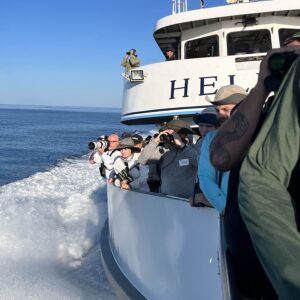
There are three types of jaegers in these waters: the hulking pomarine, the sleek long-tailed, and the in-between parasitic. This one was a long-tailed, the toughest of the three to see from shore. Soon another appeared, and the two chased each other around, eventually flying directly over the boat to a chorus of oohs, aahs, and the whir of camera shutters.
Still in the colder waters, we saw a leatherback sea turtle, the largest turtle species on Earth, sticking its barnacle-covered head out of the water, and common dolphins riding the boat’s wake. For long stretches of the trip out, however, there wasn’t too much to look at. People told stories about trips past, talked of dream birds, and made predictions about what we might find on the shelf.
Around noon, the water started changing color. We watched as the greenish waters of the Nantucket Shoals faded to crystal-clear blue, indicating we’d reached the waters off the shelf. One of the deckhands measured the visibility at 72 feet. The water temperature had risen to 80° F.
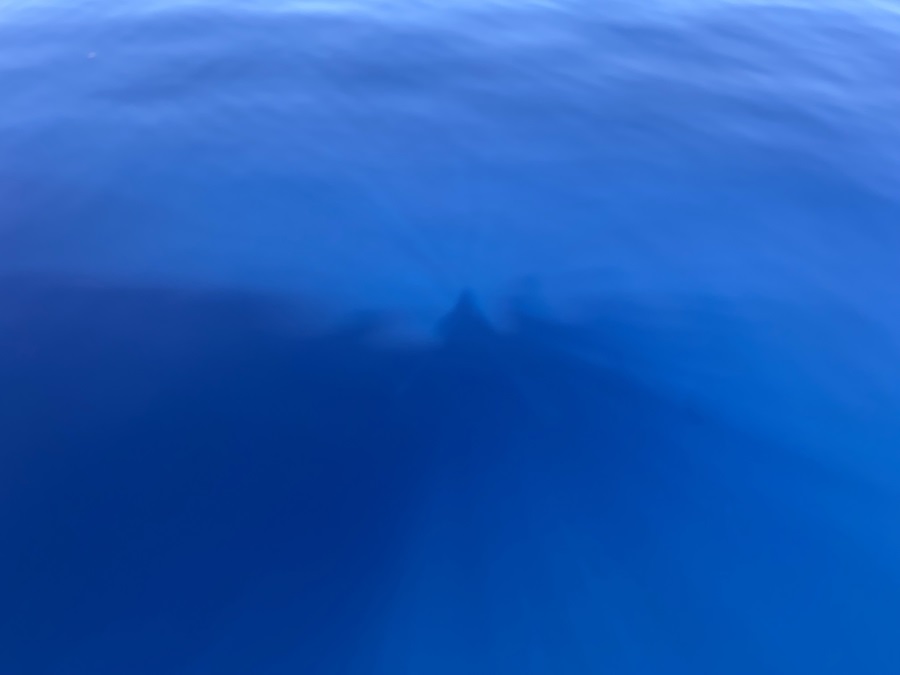
As the water changed, the marine life changed with it. Flying fish scattered in our boat’s wake. Fins belonging to blue, mako, and hammerhead sharks sliced through the water’s surface. A pod of Risso’s dolphins, cute-faced silvery cetaceans whose bodies are covered in scratch marks from fights with the squid that are their prey, cavorted around our vessel. We even saw a pair of endangered North Atlantic right whales, who sometimes spend the summer in these deep, food-rich waters.
And of course, there were different birds here. Almost as soon as we entered the canyon, Mirick said the four words every birder on board was waiting for: “white-faced storm petrel!”
We all launched ourselves to the side of the boat. White-faced storm petrels are one of the hardest seabirds to see in North America, since they are found only beyond the shelf. And they’re adorable, too: they are tiny and have long yellow legs that they use to hop along the surface of the water like kangaroos. For many people on board, me included, it was the first time we’d ever seen one.
As the storm petrel hopped away, the Helen H’s captain, Joe Huckemeyer, punched the throttle. After nearly 15 years piloting these trips, Huckemeyer — Capt. Joe, he was called on board — has some experience with following birds, and he nimbly followed the flighty storm petrel before it vanished into the distance.
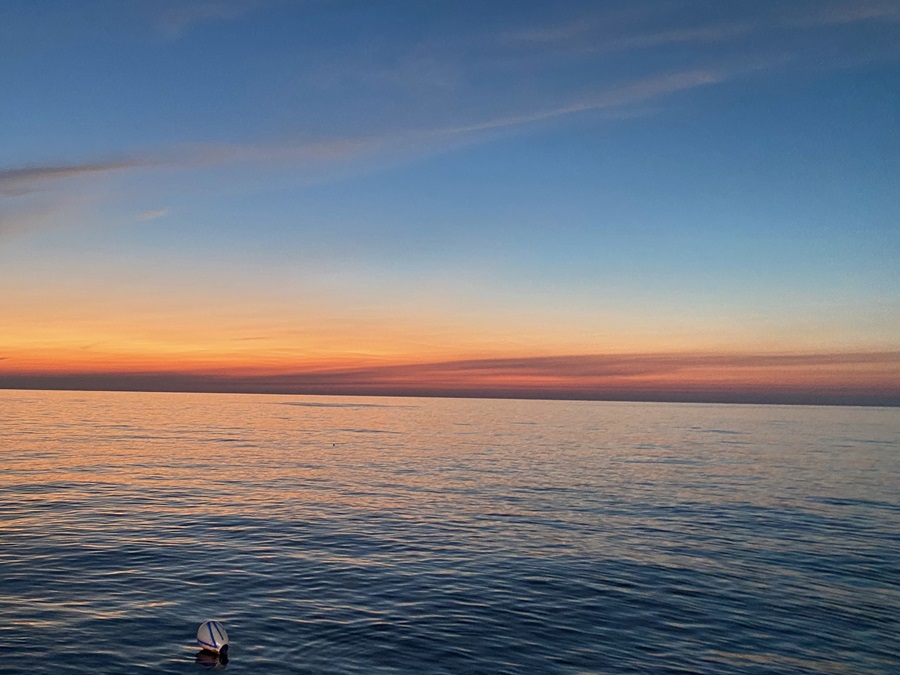
We spent the rest of the afternoon looking for band-rumped storm petrels, a darker relative of the white-faced one, among the swarms of common Wilson’s storm petrels. We found 24 that day, which one trip leader said was surely the most ever seen in one day in Massachusetts waters.
As the sun set, people began settling down for the night. I went below deck to set up my bunk only to realize I wouldn’t be using it. With no windows and stale air down there, I felt the rocking of the boat and the rumbling of my stomach and decided on plan B. I tossed my sleeping bag down on the upper deck, crawled into it, and went to sleep.
Meanwhile, the crew was casting lines for warm-water fish. Just below the surface, schools of big mahi-mahi gave chase to their bait. It was around 1 a.m. when they caught a giant tuna. I know because its big muscular body hit the deck as they wrangled it, sending banging noises through the ship. Then Mirick’s voice bid us good morning at 6 a.m., and we started another day’s search for rare sea life.
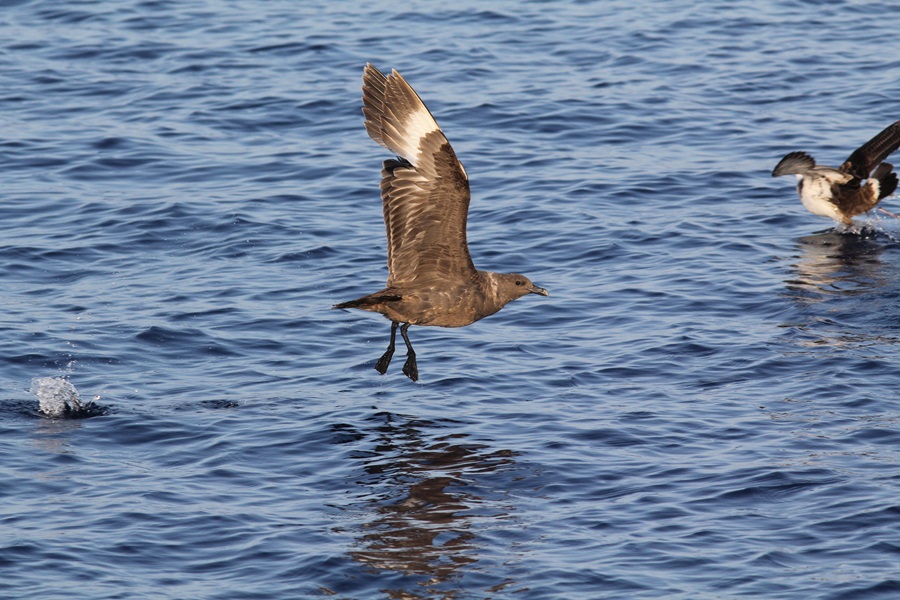
Within an hour someone shouted “skua!” These rare, enormous relatives of gulls are another major target of these pelagic trips. The trip leaders got on the bird, identified it as a south polar skua, and directed Capt. Joe to the spot where it had landed. We slowly pulled up next to the bird as it rested, and the boat listed as all 50 people on board moved to the port side. The bird, calm as could be, allowed us to watch and photograph it before taking off and circling the boat. It came back to the boat two more times that day before continuing on its way.
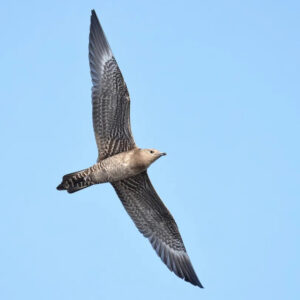
Another white-faced storm petrel hopped in our wake that day. There were also more long-tailed jaegers feeding around the boat, countless flying fish, and another pair of right whales. Although we all wondered whether a major rarity might appear in front of us, that was not to be. Still, pelagic trips are the closest thing we have in Massachusetts to safaris. Replace a jeep with a boat and swap big cats for whales and sharks and you have a similar experience: you are thrust into an unfamiliar environment to see some of the most spectacular animals on the planet.
Nobody was complaining as we pulled into the harbor at 6 p.m. and got off the boat wobbly-legged, happy, and each carrying a little of that fresh-caught tuna.
Editor’s note: Because of an editing error, an earlier version of this article, published in print on Sept. 12, incorrectly reported trip leader Steve Mirick’s last name as “Marwick.”



